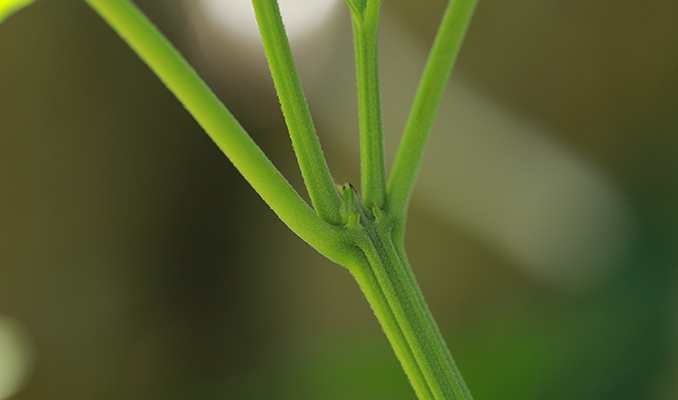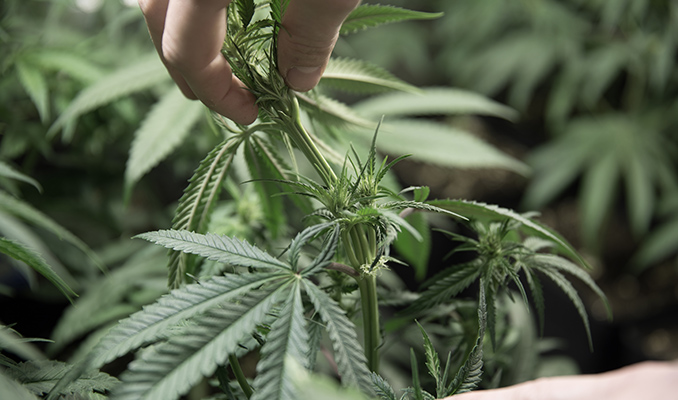Obtaining Better Yields With Pruning Techniques: Topping And Fimming
Published :
Jan 18, 2018
Categories :
Cannabis cultivation

If you're growing indoors and you still don't know what these two techniques are, you're missing out! Topping and fimming will change the game of your indoor grow operation.
Considering that cannabis has been around for thousands of years, indoor cultivation is a really recent growing method. Plants themselves have not yet naturally adapted to take advantage of indoor conditions. Lights are very different from the sun. Not only are the rays different, but also their positioning. The sun isn’t stationary at any point during the day; it moves. And cannabis plants have developed to use this to their advantage.
Because of this, growers have come up with techniques to guide plants to grow into a better shape. Not only do these methods make for healthier plants and more bountiful yields, they can potentially help control height. Today, we’ll be diving into two such techniques, and hopefully, by the end of this article, you’ll be able to fully take advantage of your indoor grow-op.
HOW THESE METHODS WORK
Topping and fimming involve stressing plants into producing multiple main colas instead of one. By cutting off the main stem or pinching top growth, the plant will concentrate its nutrients into developing 2 or more new main colas. These methods can be especially beneficial as they make for more buds, which most indoor growers seek. We advise you to perform these methods early in the vegetative stage, once the plant develops its fourth node when fimming and its fifth node when topping. During the flowering stage, it is too late to top or fim. Let’s look at both of these methods in greater detail.
TOPPING
Cannabis plants grow vertically. As they do this, fan leaves and branches start to grow horizontally or diagonally from the main stem. Topping involves cutting the main stem of the vertical branch between nodes. Try to do this with sterile scissors or a razor blade. By cutting off the main branch, two secondary branches will start to develop as main ones. These will grow diagonally instead of upwards, making the plant shorter and easier to deal with. Topping will stop the plant from growing like a Christmas tree. It’s what will help shape the cannabis plant into something that is better for indoor grow environments.
Now, you can continue to do this as the branches grow. You can trim the top of every branch and grow a crazy bonsai plant. Just make sure you don’t go too far and end up with a result you can’t control. Some growers will wait around 30 days into the plant’s life before topping them. It imposes a lot of stress and a young plant might not be able to handle it. We would also recommend you wait one or two weeks after your first topping session before starting another one.

FIMMING
This second method resulted from a famous mistake. The acronym “FIM” stands from “Fuck, I missed”. This is because the grower who discovered this method was originally trying to top their plants, but made the wrong cut. Instead of cutting all the way through the stem, the grower left around 20% of the branch. But a few weeks after the mistake was made, the results became apparent. So much so, that it’s now a widely used technique. Fimming involves pinching off most of the top growth, instead of doing a clean chop of the stem between nodes. As a result, up to four new main colas will develop. With this, you can understand why the previously called mistake is now a popular growing technique.
It’s recommended that you pinch off instead of cutting when fimming. This will give you more room for error. Bits and pieces of the leaves will stay behind. It won’t be such a precise and radical cut. Just make sure you’re not pinching too close to the nodes.

PROS AND CONS
Although this might all sound very promising, these methods still aren’t for every grower. It will always depend on your skills, facilities, and even plant genetics. Let’s go through the advantages and disadvantages of each method so you can be sure it’s the right thing for you.
If you have limited space for growing, topping might be the ideal technique. Fimming won’t reduce plant height, although it will support robust development. But on the other hand, topping is much more stressful on the plant than fimming. It would be much easier for you to handle losing a hand than a whole arm. The same happens with cannabis. Leaving traces of the growing leaves behind will help the plant recover more comfortably.
Although they will hopefully bring you more bud, using these techniques will prolong your 18/6 vegetative stage. Expect to spend around 4-6 weeks in this. The plants need time to recover and adapt to their new shape. Also, don’t forget that the increased lateral size will require some stakes to support your plant and prevent even more stress.
If you’re planting autoflowering seeds, forget these techniques. These strains have a very short life cycle and have no time to deal with the stress of these methods. The genetics you choose will go a long way in determining the effectiveness of topping and fimming.






































